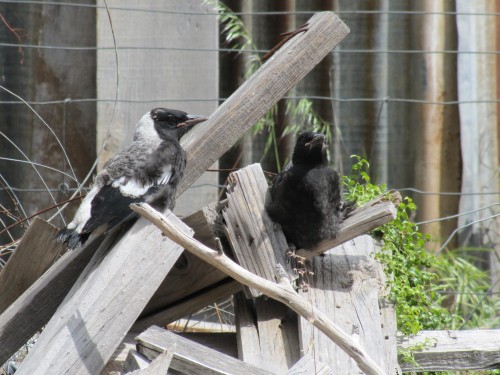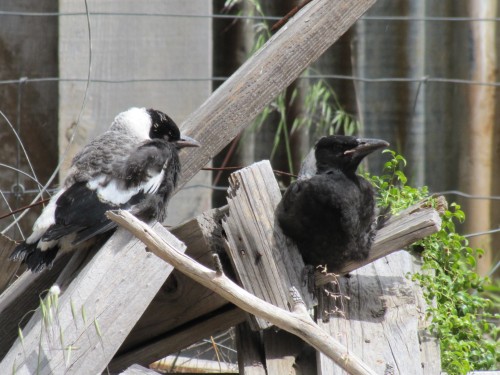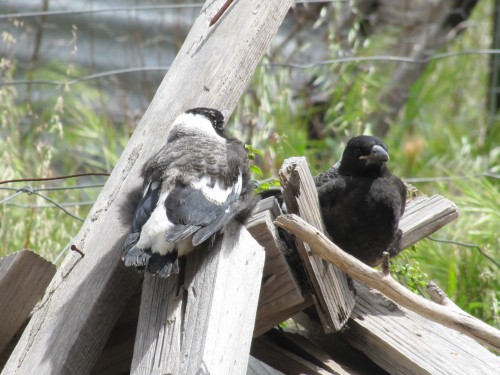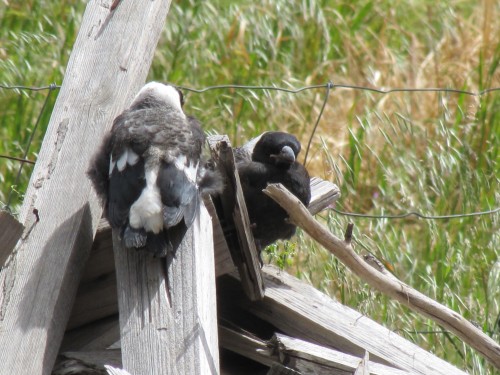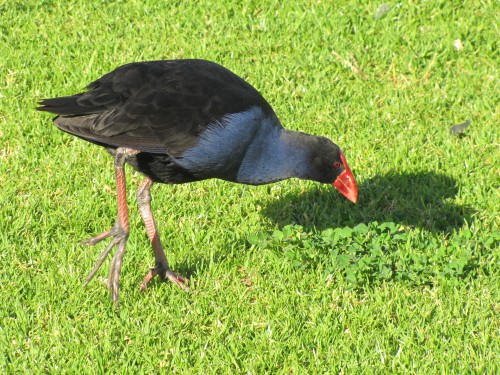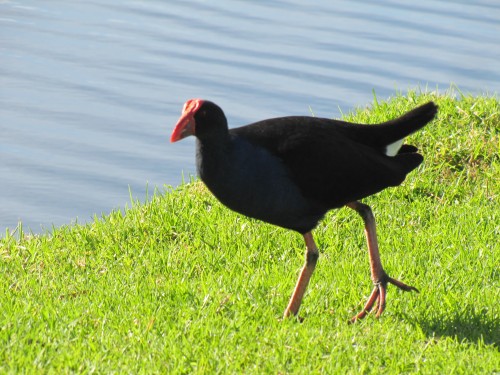Wild weather and baby magpies
Over the last few weeks we have had some violent wind storms. Spring here in South Australia can often be windy, but these were gale force winds. One afternoon earlier this week wind gusts up to 80kph were recorded many times. While we didn’t suffer any property damage others in our state were not as fortunate. One poor man even drowned when his boat was overturned in rough conditions on the River Murray upstream from my home town of Murray Bridge.
During the worst of the stormy weather I was concerned for the baby magpies in two nests within 50 metres of my office where I am writing this post. We had watched with interest when the nests were being built. Actually, they were last year’s nests which were refurbished. Then we waited while the mother birds sat patiently during the incubation period. Then over the last few weeks there was a constant begging noise from the babies.
When the first storm hit last Monday the babies were able to hang on to the nesting material. The following storms on Wednesday were even worse and the young were blown out of their cosy homes. Watching them today I suspect that they were not yet quite ready to fledge* because they are still unable to fly; they run everywhere – well, it’s more of a wobbly, unsteady waddle.
At one point the two babies from the nest closest to our house clambered up on a heap of scrap wood near the garage. I managed to get up reasonably close without spooking them, thus getting some good photos. You will notice that they are still very downy. These downy feathers will remain for some months yet. You will also notice that the nearest one has not much of a tail yet. In the first few days after fledging, they are terrible flyers as they learn how to get around; having virtually no tail does not help.
*Note: to see a definition of the word fledge click here.
Further reading:
- Baby Magpie – the most popular post on this site with nearly 500 comments from readers.
- Crash landing for a baby magpie
Purple swamphens at Sturt Reserve, Murray Bridge
Purple swamphens are a common species along the River Murray, including here in my home town of Murray Bridge, South Australia. They are usually quite happy to graze along the river’s edge, on the nearby grass on the river banks and on the lawns where the local council maintains picnic areas and reserves. They can also be commonly seen along swamplands and the dairy flats in the lower reaches of the river here.
I am always delighted to see this species, especially when the sunlight catches the beautiful colours on the birds, as in the photo above.
Portrait of a Willie Wagtail
Earlier this year we visited the Pangarinda Arboretum at Wellington here in South Australia. While photographing the many wildflowers on show I took this portrait of a Willie Wagtail.
The arboretum is about a half hour drive from home and just over a hour’s drive from Adelaide. From a small hill in the reserve one can get a good view of the River Murray a few hundred metres to the west. The arboretum is a collection of hundreds of Australian native plants. I really enjoy visiting this reserve as there is always a good range of wildflowers to photograph. I’ve included several below. This arboretum has been established and is maintained by an enthusiastic group of local plant lovers. It is always open to the public and entry is free.
The birding in this native plant garden can be variable. Sometimes the place is full of a wide variety of birds; at other times I struggle to get more than 20 species on my list. It depends very largely on what is flowering although some species are resident breeding birds, like some of the honeyeaters.
Crested Tern, Murray River mouth
The Crested Tern can be found right around the Australian coastline. In some cases it can also be found along waterways some distance inland. In the case of the bird in this photo, it was near the mouth of the Murray River in South Australia, only a few hundred metres from the coast.
Crested Terns can be found alone or in small groups but they range up to breeding colonies numbering in the thousands. While they prefer coastal habitats they can also be found along rivers, lakes, freshwater wetlands, estuaries, salt swamps, bays and inlets.
The River Murray is collapsing
Warning: This post has nothing to do with birds or birding. Since first posting this article one of my regular readers left a comment that spurred me on to add the last few paragraphs.
Many people acknowledge that the River Murray and the Lower Lakes are in desperate trouble. Levels are at the lowest in many decades, the flow is almost non existent and we have little idea of where the much needed water to keep it alive is coming from.
This desperate situation has been brought about by severe drought in the catchment area over the last three (or more) years plus decades of overuse and over allocation to irrigators upstream. The states upstream have almost totally ignored the needs of South Australia.
Something happened yesterday on the river bank right here in my home town of Murray Bridge that is symptomatic of this disaster happening in front of our eyes.
An 80 metre stretch of the river bank suddenly collapsed into the river, taking at least three cars with it. You can read about it and see a photo here. I can’t go down there and take my own photos because the area is now a restricted zone.
The bank collapse was at a local marina. The photo below was taken a few months ago at Swanport Reserve, about a kilometre south of the marina.
Without good, widespread above average rainfall right across the Murray-Darling basin over the next 2 years, plus well above rainfall in the Adelaide Hills this coming winter-spring, I fear Adelaide will run out of water sooner rather than later, possibly next summer. It is that serious from a human viewpoint. Economically many orchardists and dairy farmers are already going to the wall and many more are well on the way.
Beyond that, however, the long term environmental issues are potentially catastrophic – it may have already reached the point of no return. We may well be seeing the early death throes of the river and lower lakes. The implications for the bird life of the whole river system are frightening; they are threatened too.
